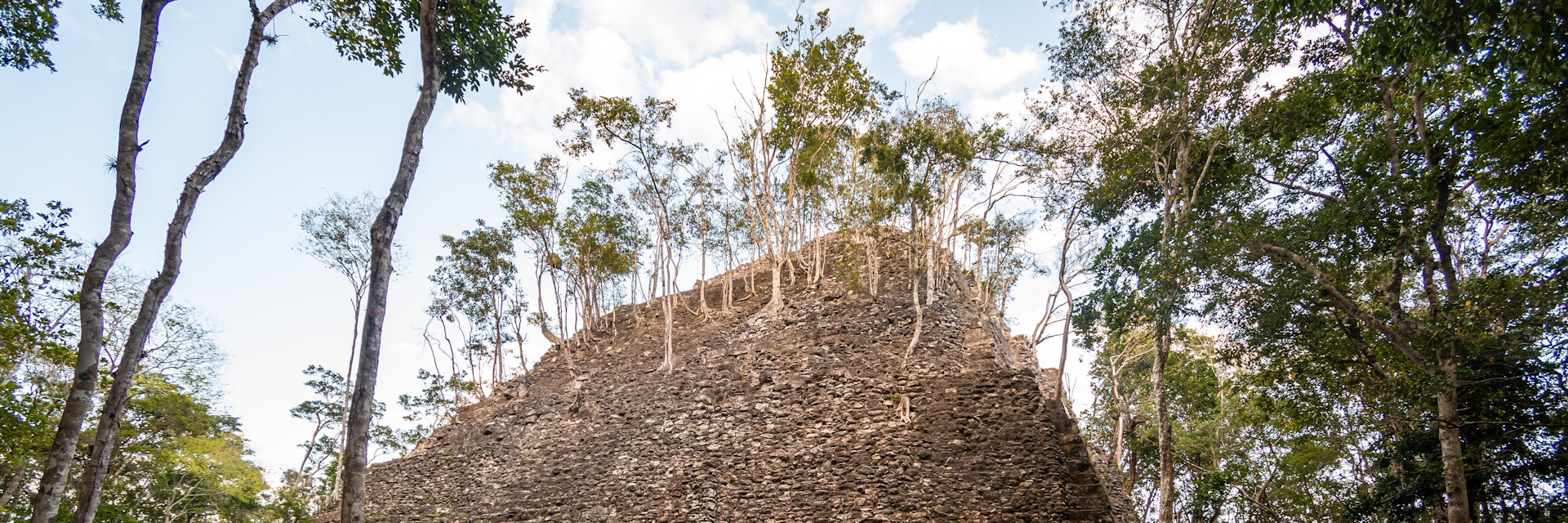Buried within the furthest reaches of the Petén jungle, just 7km south of the Mexican border, the Late Preclassic metropolis at El Mirador contains one of the largest clusters of buildings of any single Maya site, among them the biggest pyramid ever built in the Maya world. Ongoing excavations have only scratched the surface, so many are still hidden beneath the jungle.
El Mirador (The Lookout), the name given to the site by chicleros (chicle harvesters) before its 'discovery' by archaeologists, is due to the excellent views provided by some of the pyramids. La Danta (the Tapir) looms some 70m above the forest floor. Another pyramid, El Tigre, measures 55m high and its base covers 18,000 sq meters – six times the area of Tikal's biggest structure, Templo IV. La Danta, El Tigre and the other temples erected here display the unusual 'triadic' style, in which three pyramids crown a large platform, with the one in the middle dominating the other two, which face each other at a lower level. The facades of these buildings were once embellished with carved masks.
You'll have to use your imagination to picture this city that, at its height, spread over 16 sq km and supported tens of thousands of citizens. It was certainly the greatest Maya city of the Preclassic era, far exceeding in size anything built subsequently in the Maya world. Within the complex, more than a dozen internal causeways link the main architectural complexes.
Scholars are still figuring out why and how El Mirador thrived (there are few natural resources and no water sources save for the reservoirs built by ingenious, ancient engineers) and what led to its abandonment in 150 AD. Some five centuries after that date, El Mirador appears to have been resettled, as suggested by the existence of Classic architecture among the older structures. Pottery unearthed from this era displays the highly refined codex-style of decoration, in which calligraphic lines are painted on a cream-colored surface, with designs believed to resemble Maya codices.
Richard Hansen, a professor from Idaho State University, is leading the effort to map the Mirador basin, a vast swath of northern El Petén comprising dozens of interconnected cities, with funding from an assortment of international and Guatemalan foundations and private sources. In March 2009, Dr Hansen and his crew made a significant discovery when they excavated a 4m frieze at the base of La Danta, dating from 300 BC, which they surmise decorated a royal pool. The carved images upon it depict the twin heroes Hunahpú and Ixbalnqué swimming through the underworld domain of Xibalbá, a tale that is related in the Popol Vuh (the Maya 'Bible'). The finding underlines the importance of El Mirador in establishing the belief system of Classic-era civilizations.

